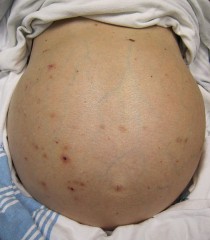
The disease does differ in its severity and has also been categorised by the Child-Pugh scale. This scale groups the severity of the condition on a spread of classes.
At class A of the Child-Pugh scale, the disease is regarded to be quite acute and the chance of survival is very high. The chance of surviving the following year ahead of diagnosis is at a 100 per cent and for the year after that 85 per cent.
At class B, this is where the cirrhosis is becoming more severe and problematic for the individual. The chance of surviving the following year ahead is 81 per cent and the year after that is at 57 per cent.
The most severe category on the Child-Pugh scale for cirrhosis is class C. This is when the cirrhosis has become much more severe and difficult for the individual. The chance of surviving the following year is 45 per cent and the year after that 35 per cent.
In comparison with the category of stage four, it is assumed that it is relational to class C of the Child-Pugh scale. However, it is very important that you are consulting with your doctor to find out information about your individual case of cirrhosis. They can give you best plan of action for combating the effects of the disease and making yourself as comfortable as possible for what time you have left.